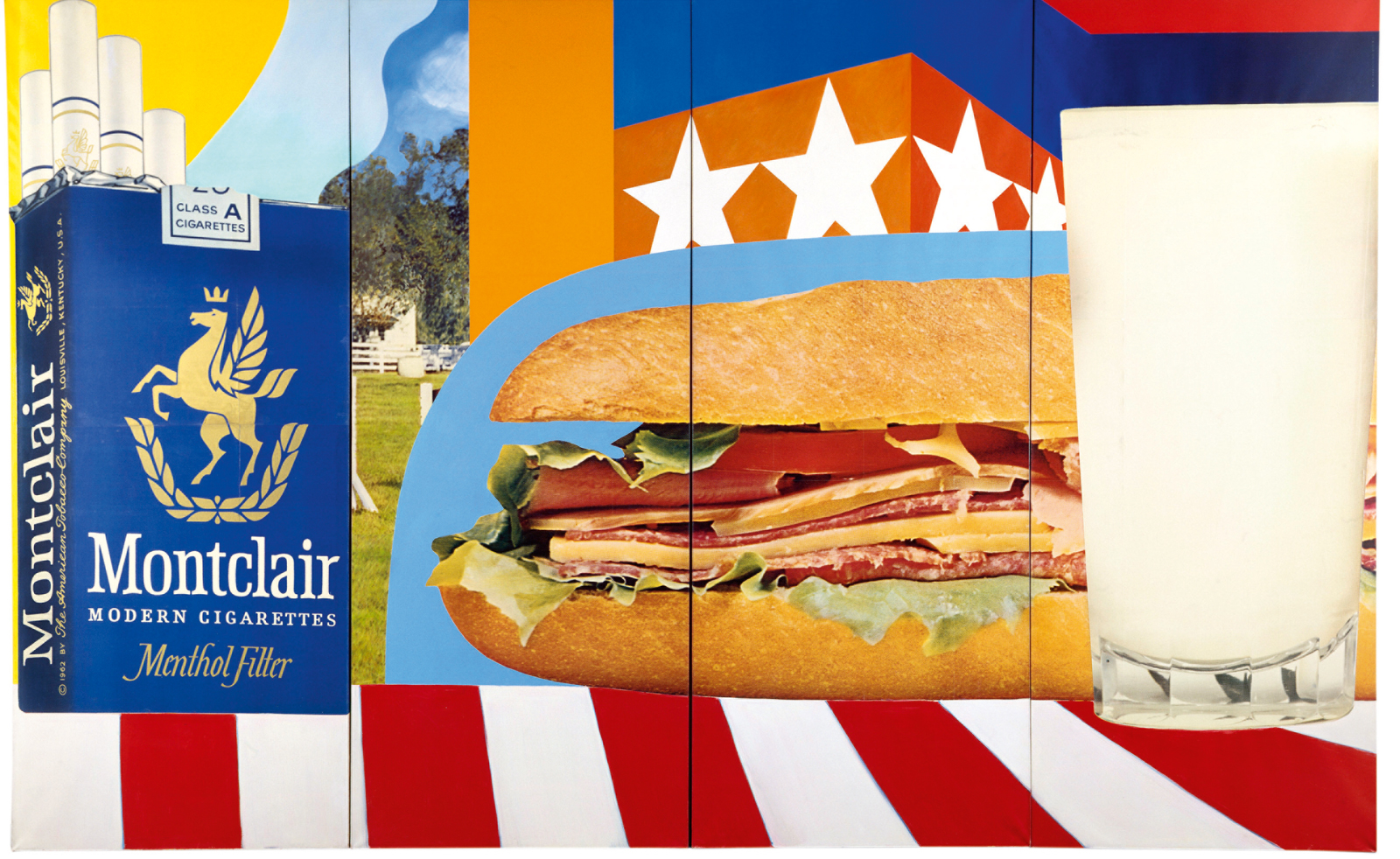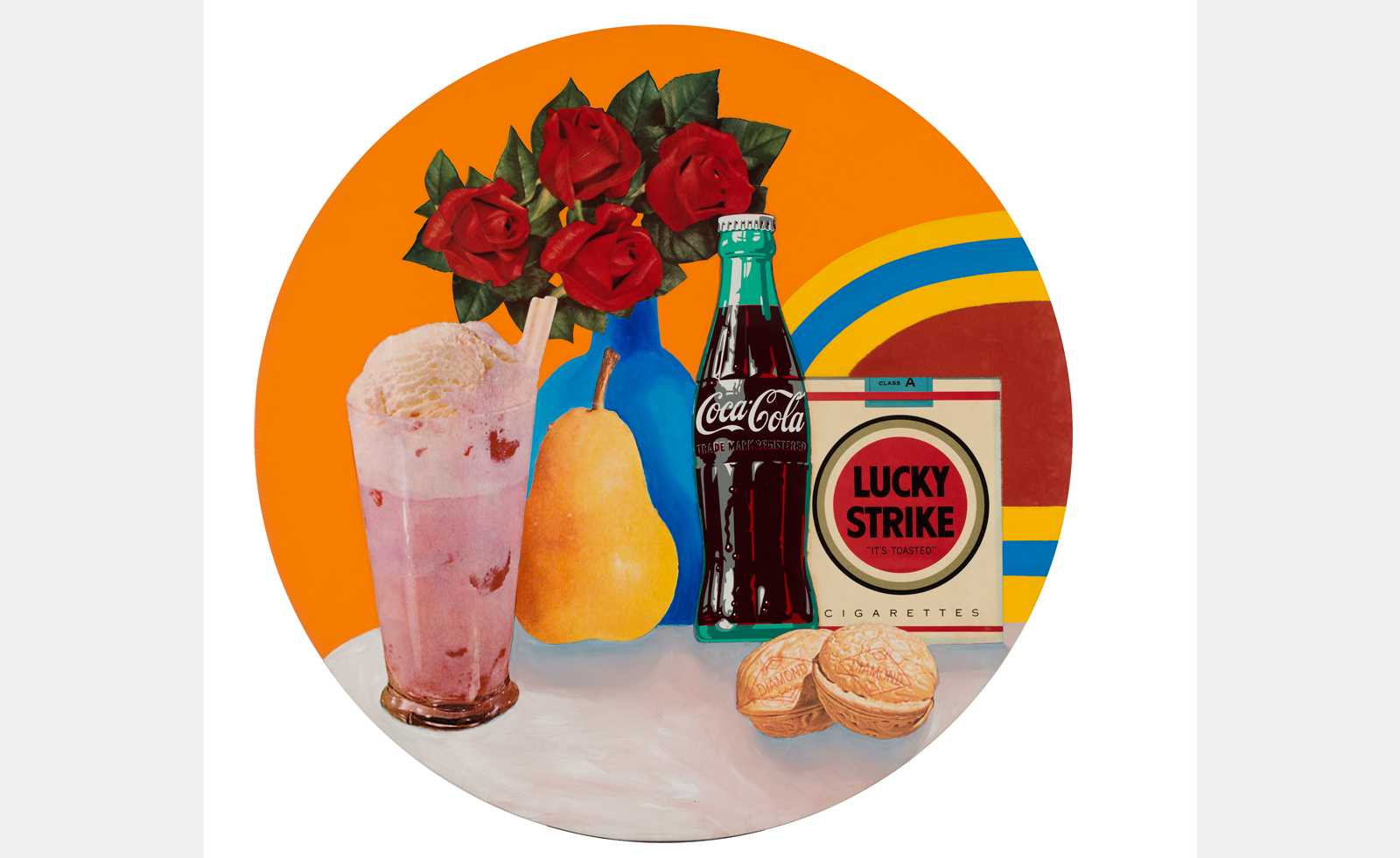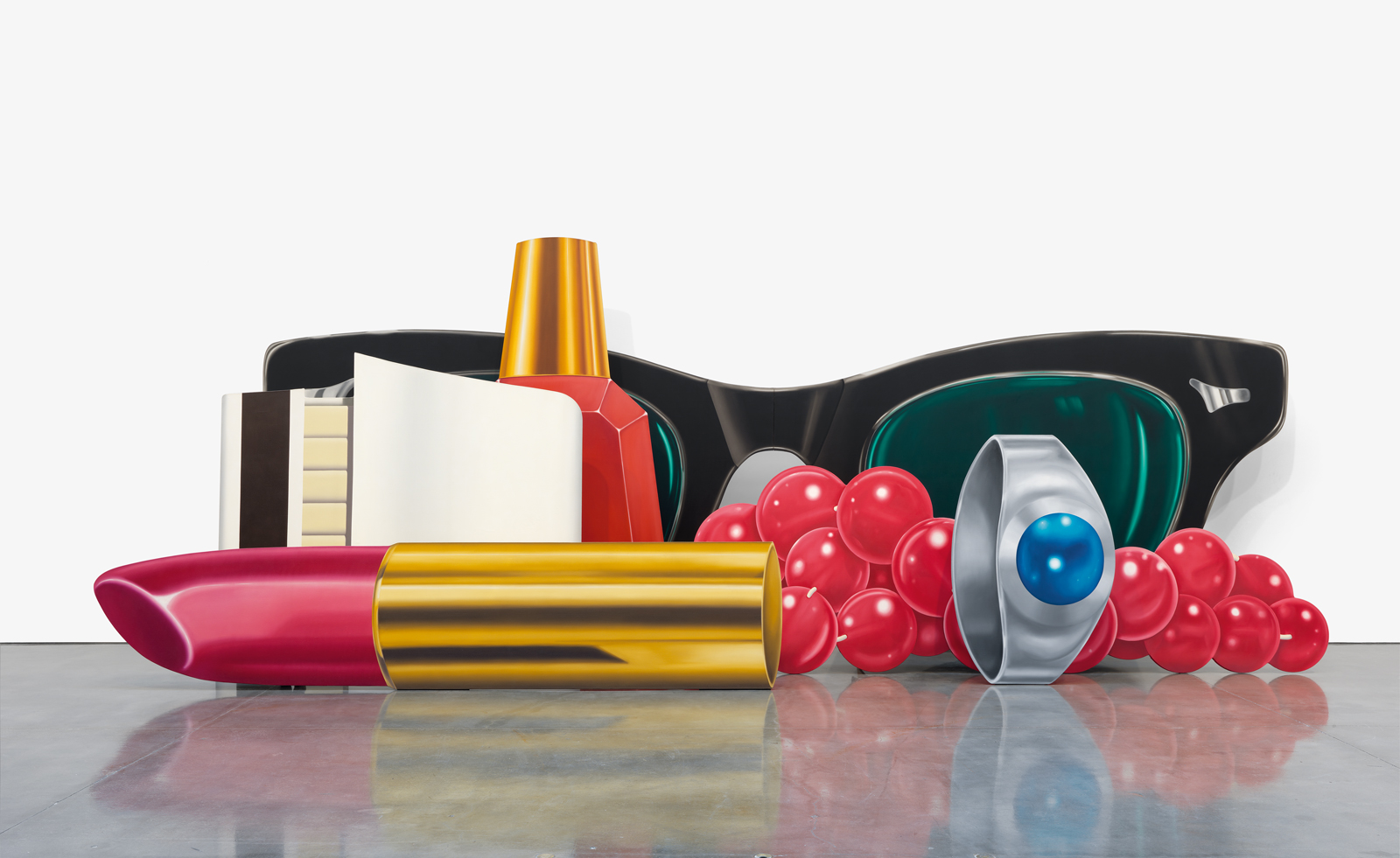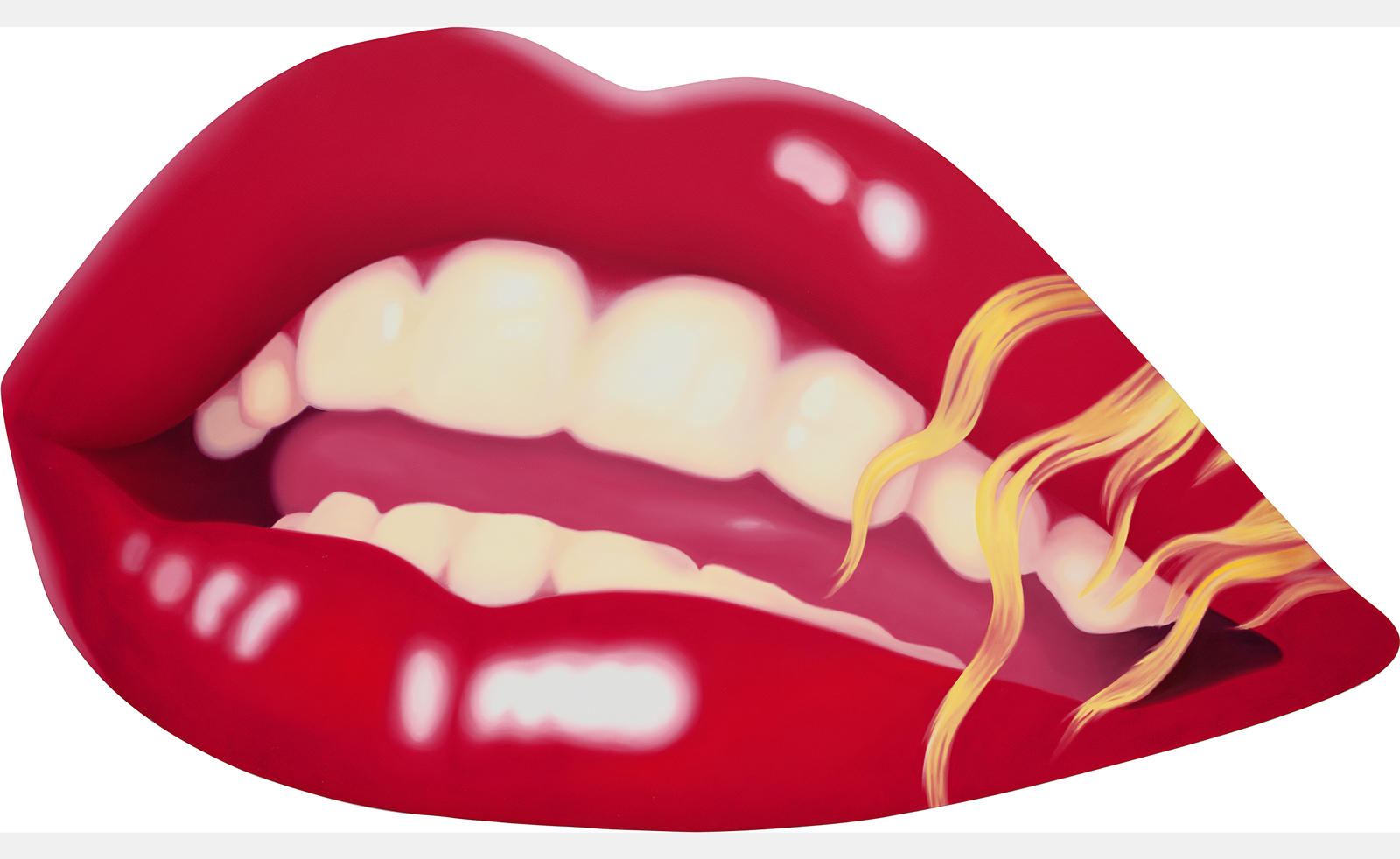
Where does Tom Wesselmann belong in the canon of art history? Wesselmann’s pouty lips, media-infused compositions, consumerist commentary, and of course his nude figures are known to art enthusiasts, but little is known about his impact. Curators Dieter Buchhart and Anna Karina Hofbauer sought to answer that question in the exhibition ‘Pop Forever, Tom Wesselmann &...’, on view at Fondation Louis Vuitton in Paris until 24 February 2025. Featuring 150 paintings and works by Wesselmann, alongside 70 works by 35 artists, who span from Pop’s Dadaist roots to today, the exhibition goes beyond your standard retrospective, recontextualising Wesselmann’s oeuvre for a more diverse and younger audience.
Although Wesselmann, who passed away at 73 in 2004, was a central figure of the Pop Art movement of the 1950s and 1960s, his name recognition isn’t as strong as his contemporaries Jasper Johns, James Rosenquist, Andy Warhol, and Roy Lichtenstein. ‘People are less familiar with Wesselman’s name than they are with Warhol’s name,’ said Jeffrey Sturges, the director of exhibitions for the estate of Tom Wesselmann. ‘And so what this meant was that we could fit him into that history.’

About a decade ago, a comprehensive survey of Wesselmann’s work, ‘Beyond Pop Art: A Tom Wesselmann Retrospective’, travelled through the Montreal Museum of Fine Arts; Denver Museum of Art; Richmond, Virginia Museum of Fine Arts; and to Wesselmann’s hometown in Ohio at the Cincinnati Museum of Art. The curators of ‘Pop Forever, Tom Wesselmann &...’ went a step further, showing the works of artists who influenced Wesselmann, and those influenced by the late artist.
One section of the exhibition displays a handful of interpretations of the American flag. Tom Wesselmann’s 1962 collage, Still Life #15, shows an obscured American flag as the backdrop to a portrait of George Washington, a bottle of Four Roses whisky, and a grilled steak, a less serious rendition than Barkley L Hendricks’s late 1960s painting that shows the flag covered by a black cloth, or David Hammons’ 1990 African American Flag, or Jasper Johns’s 1958 painting.
Derrick Adams, one of the artists featured in the exhibition, started looking into Wesselmann’s process, engaging with his studio to observe how he was able to work between mediums. His four works in the exhibition, Super Nude 1 through 4, depict a nude Black male superhero, complete with an American flag cape referencing Hammons’ African American Flag. ‘I was interested in responding to the way that he incorporated the female figure as an image of desire in connection to consumer products, and consumerism,’ said Adams, whose pieces are in direct conversation with Wesselmann’s Great American Nudes.

Mickalene Thomas, who contributed a handful of works to the exhibition, found herself gravitating towards Wesselmann’s work because of their shared similarities, like their interest in exploring desire and the female body in their work as well as collaging and pulling images from media. ‘Tom has a very incredible, prolific way of thinking about his work before actually making the painting or making the object, like, there's so much else going on. So by the time he does get to that, it's like a dance,’ she said. Her collages are imbued with Pop Art references, from the linear curves that echo Wesselmann, to the crystal Ben-Day dots that define Lichtenstein’s work.
While Wesselmann is known primarily for portraying white female bodies, he also created pieces featuring Asian and Black figures. Thomas found it refreshing that he didn’t exotify or devalue the non-white subjects. ‘He was putting the white woman and a Black woman on the same platform of desire,’ she said.
‘Pop Forever, Tom Wesselmann &...’ resonates with young and old audiences alike, giving viewers moments of discovery by showing his lesser-known works filled with electronics and imagery of his era alongside his iconic Mouth and Great American Nudes series. The exhibition defines Wesselmann’s place in art history, by showing the work of the Dadaists before him, like Marcel Duchamp and Kurt Schwitters, as well as his contemporaries, such as Marjorie Strider, Marisol, Andy Warhol and Robert Rauschenberg, and the artists of today, like Kaws, Do Ho Suh, Lauren Halsey, Tomokazu Matsuyama, and Ai Weiwei.
Indeed, Pop Art is forever. ‘We all can be inspired by someone like Tom Wesselmann and pull from it, and you know and understand that he is quintessentially the American artist, and just as important as Picasso,’ said Thomas.
'Pop Forever, Tom Wesselmann &...' is on view at Fondation Louis Vuitton in Paris until 24 February 2025








